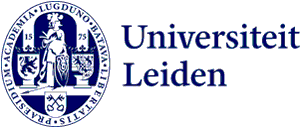
What is the future of translation software within the university?
Is there a place for machine translation engines like Google Translate within the Faculty of Humanities? Associate professor Lettie Dorst’s new educational website aims to help students and teachers find an answer to this question. ‘The use of AI tools, such as Bing and ChatGPT, shouldn’t be seen as an obstacle but rather as a didactic resource in the lecture hall.’
Although some lecturers might prefer otherwise, the use of translation apps and websites is now common practice in higher education, says Dorst. ‘Many students and even lecturers use Google Translate or other online translation tools almost without thinking. They run all kinds of texts through them without realising what happens to these texts. When you close the app or website, your translation – and hence your data – is still there. Everything remains stored in the cloud, and the provider is even permitted to sell that data to third parties. This is actually stated in the user agreement, but we never read it. The apps are free, but you pay with your data. So you should think carefully before translating certain personal or sensitive information with an app. We’ve created our educational website with the hope of instructing the university’s students, lecturers and support staff on how to use these translation tools not only effectively but also – and most importantly – responsibly.’
Using translation software as a dictionary
This effective use involves more than just privacy. Many students use translation software as a dictionary but don’t realise that the underlying algorithms actually need context to determine which word you mean. For example, the Dutch word week can be translated into French as la semaine (the period of time) and also as faible (weak). ‘This kind of insight into how the software works and what it can and can’t do is important not only for students studying translation or a foreign language, but also for history or economics students, for example, who have to write an essay or thesis in English,’ explains Dorst. ‘There will be students who write their essay in Dutch first and then convert it into English using a translation tool. So there really is a potential danger in doing this. If the student in question isn’t aware of the pitfalls of these tools, they can make quite a hash of their hard work.’
Academic misconduct?
Another consideration is that some lecturers see the use of translation software, by definition, as fraud or ‘cheating’. Dorst fundamentally disagrees: ‘As a student, you’re always personally responsible for the end product. Even if the software is better at English or French or Japanese than you, it’s still up to you to check that the translation makes sense.’ It is only cheating if students disguise the fact that certain sentences aren’t their own words by translating quotations; however, plagiarism-by-translation existed long before the advent of Google Translate. What we would like to see is students reading more articles in foreign languages and then quoting from them, making use of translation software. The machine translation can be placed in brackets after the quotation, together with the statement that you used DeepL, for example.
In language studies, the position of translation software is more sensitive. Is there room for this software in a curriculum designed for learning to write a language yourself? ‘Yes,’ says Dorst decisively. ‘Even in foreign language studies, I see the use of machine translation software as an alternative way to help your language acquisition. Students will perhaps find new sentence structures or word choices in the translation, which they haven’t seen before. They will also be able to reflect on differences between languages that can cause translation problems and errors, such as the fact that some languages don’t have personal pronouns, or have free word order due to the use of cases. Analysing machine translations can help to reveal language differences, and thus broaden and deepen students’ analysis skills and knowledge.’
Looking critically
Dorst hopes that her new website will help students to improve their machine translation literacy so that they continue to look critically at a given translation. ‘I also hope the website will contribute to defining a clearer position for translation software within the faculty and university. At present, there are no clear rules for this, there is still no policy – although there is for ChatGPT – while the discussion is very much ongoing, and students are using translation tools intensively. The website can hopefully be a first step towards responsible use of translation software by students.’
The Machine Translation in Higher Education website can be found here.
